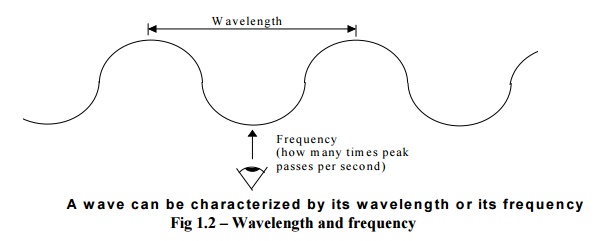Chapter: Civil : Remote Sensing Techniques and GIS : EMR and Its Interaction With Atmosphere and Earth Material
Electromagnetic Spectrum

ELECTROMAGNETIC SPECTRUM
The first requirement
for remote sensing is to have an energy source to illuminate the
target (unless thesensed energy is being emitted by the target). This
energy is in the form of electromagnetic radiation. All electromagnetic
radiation has fundamental properties and behaves in predictable ways according
to the basicsof wave theory.
Electromagnetic
radiation consists of an electrical field (E) which varies inmagnitude
in a direction perpendicular to the direction in which the radiation is
traveling, and a magnetic field (M) oriented at right angles to the electrical
field. Both these fields travel at the speed of light (c). Two characteristics
of electromagnetic radiation are particularly important to understand remote
sensing. These are the wavelength and frequency.
Electromagnetic
radiation (EMR) as an electromagnetic wave that travels through space at the
speed of light C which is 3x108 meters per second.
Theoretical
model of random media including the anisotropic effects, random distribution
discrete scatters, rough surface effects, have been studied for remote sensing
with electromagnetic waves.
Light
can be thought ofasawave in the 'electro magnetic field'of the univer Awave can
be characterized by its wavelength or its frequency

The
wavelength is the length of one wave cycle, which can be measured as the
distance between
successive wave crests. Wavelength is usually represented by the Greek letter
lambda (?). Wavelength is measured in metres (m) or some factor of metres such
as nanometres (nm, 10-9 metres), micrometres (?m, 10-6 metres)
(?m, 10-6 metres) or
centimetres (cm, 10-2
metres). Frequency refers to the number of cycles of a wave passing a fixed
point per unit of time. Frequency is normally measured in hertz (Hz),
equivalent to one cycle per second, and various multiples of hertz.
Wavelength
and frequency are related by the following formula:

Therefore, the two are
inversely related to each other. The shorter the wavelength, the higher the
frequency. The longer the wavelength, the lower the frequency. Understanding
the characteristics of electromagnetic radiation in terms of their wavelength and
frequency iscrucial to understanding the information to be extracted from
remote sensing data.
The
electromagnetic spectrum ranges from the shorter wavelengths (including gamma
and x-rays) to the longer wavelengths (including microwaves and broadcast radio
waves). There are several regions of the electromagnetic spectrum which are
useful for remote sensing.

Related Topics